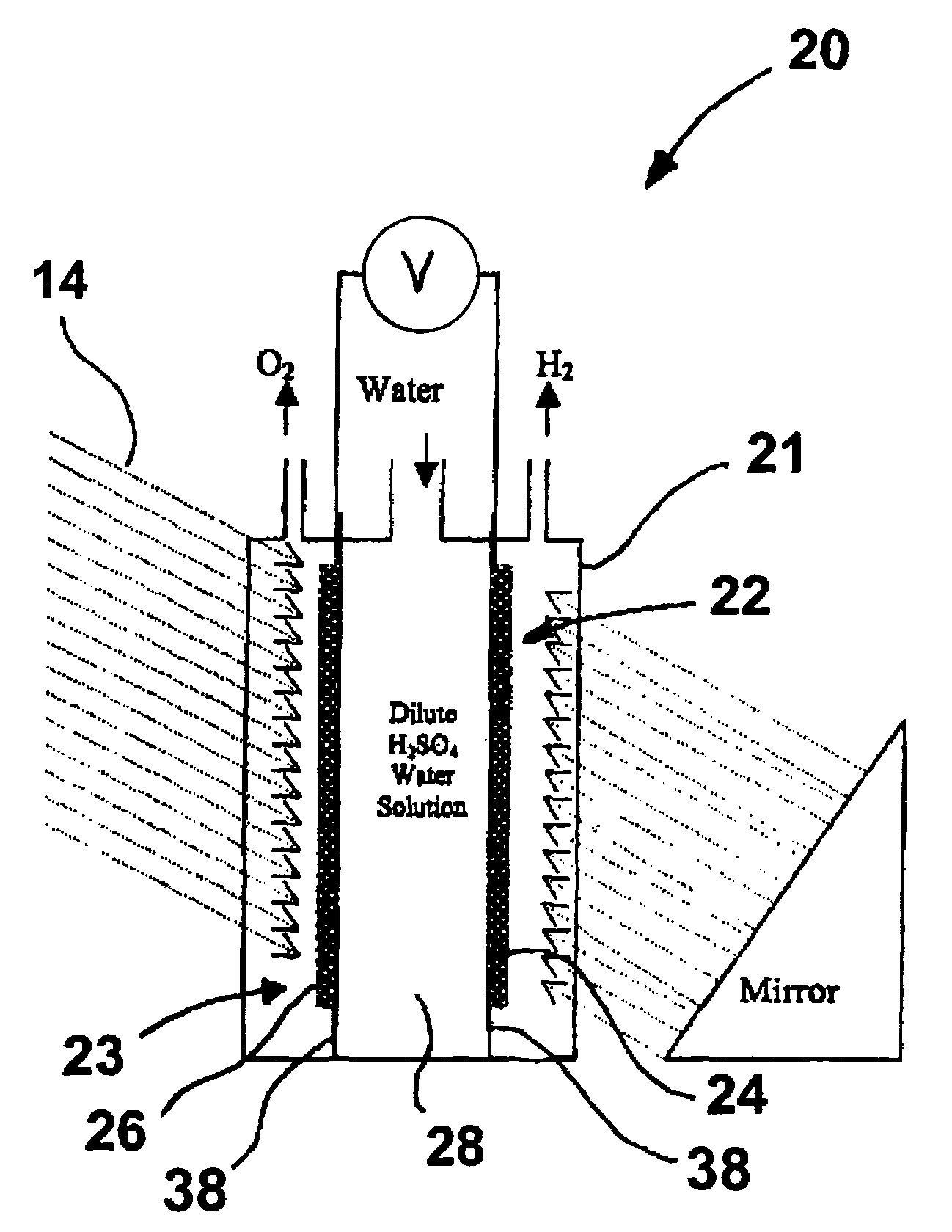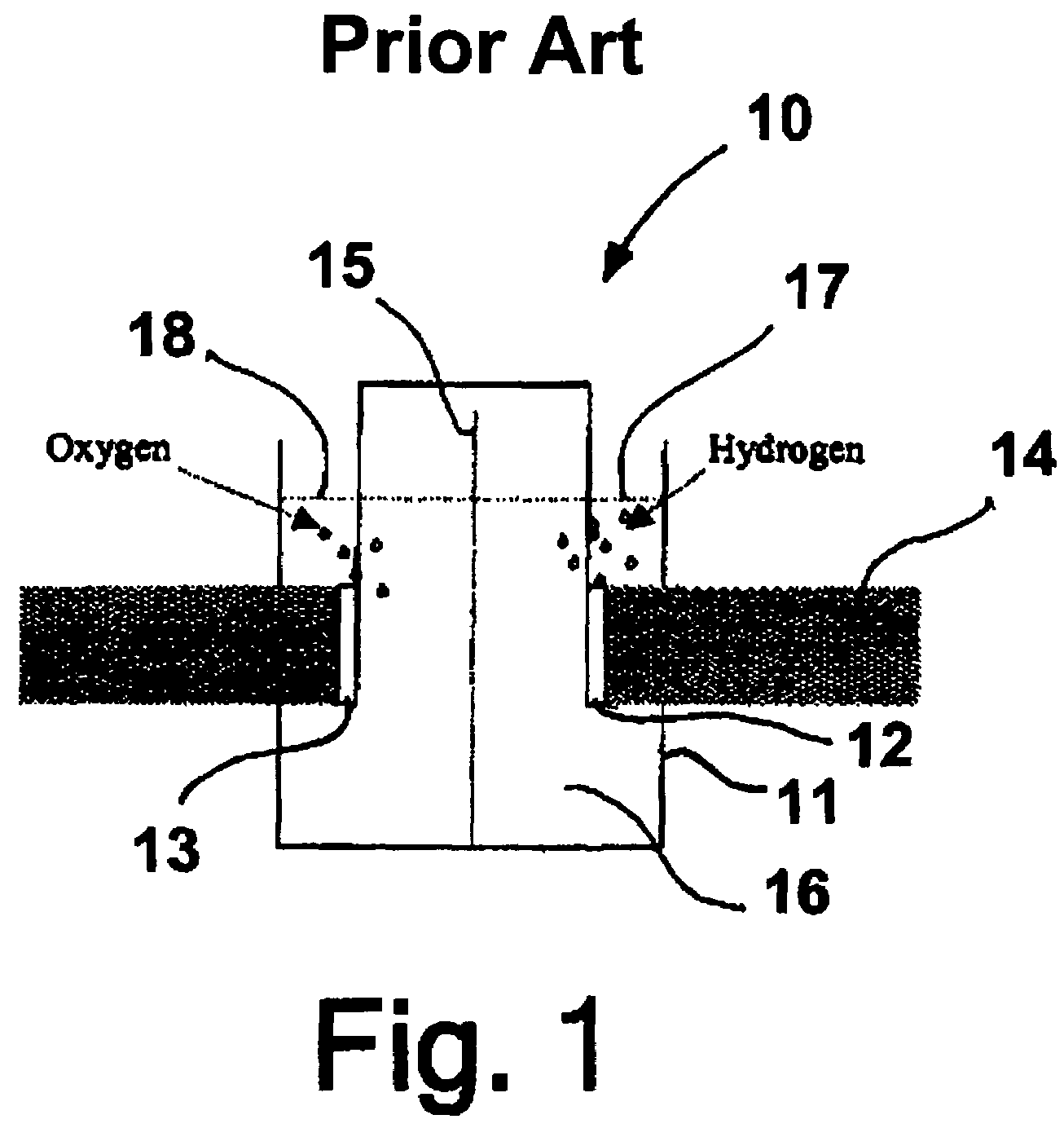Solar cell electrolysis of water to make hydrogen and oxygen
a solar cell and electrolysis technology, applied in electrochemical generators, batteries, pv power plants, etc., can solve the problems of low efficiency, high overpotential of photoelectrodes, and limited system life, so as to improve durability, reduce semiconductor corrosion during the operation of the apparatus, and avoid energy loss. incurred
- Summary
- Abstract
- Description
- Claims
- Application Information
AI Technical Summary
Benefits of technology
Problems solved by technology
Method used
Image
Examples
Embodiment Construction
[0022]FIG. 1 is a diagram showing a conventional water-splitting photoelectrochemical cell 10, which cell comprises a transparent housing or enclosure 11 filled with an electrolyte (e.g. water and H2SO4) 16, a semiconductor photoanode 13 and a semiconductor photocathode 12, both of which comprise a light sensitive catalytic material, disposed within and surrounded by the electrolyte and a separator 15 also disposed within the electrolyte separating the semiconductor photoanode 13 from the semiconductor photocathode 12. The hydrogen half-cell reaction for this cell is:
2H+ (aq)+2e−→H2 (g) O V vs. NHE
and the oxygen half-cell reaction is:
2H2O (l)+4h+→4H+ (aq)+O2 (g) 1.23 V vs. NHE
Thus, the total reaction is:
2H2O→2H2 (g)+O2 (g)
Therefore, in the whole reaction, there is no loss of a proton.
[0023]As can be seen in FIG. 1, conventional photoelectrochemical cells, also sometimes referred to herein as photoelectrolysis cells, have a thick layer 17, 18 of liquid electrolyte (e.g. a water / acid ...
PUM
| Property | Measurement | Unit |
|---|---|---|
| voltage | aaaaa | aaaaa |
| n-type semiconductor | aaaaa | aaaaa |
| band gap | aaaaa | aaaaa |
Abstract
Description
Claims
Application Information
 Login to View More
Login to View More - R&D
- Intellectual Property
- Life Sciences
- Materials
- Tech Scout
- Unparalleled Data Quality
- Higher Quality Content
- 60% Fewer Hallucinations
Browse by: Latest US Patents, China's latest patents, Technical Efficacy Thesaurus, Application Domain, Technology Topic, Popular Technical Reports.
© 2025 PatSnap. All rights reserved.Legal|Privacy policy|Modern Slavery Act Transparency Statement|Sitemap|About US| Contact US: help@patsnap.com



